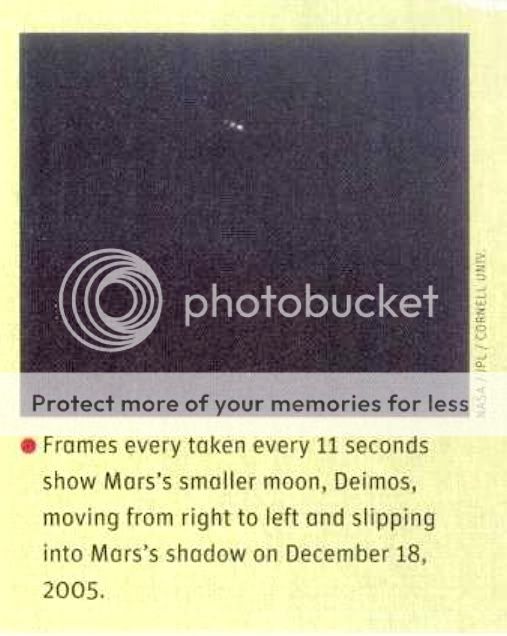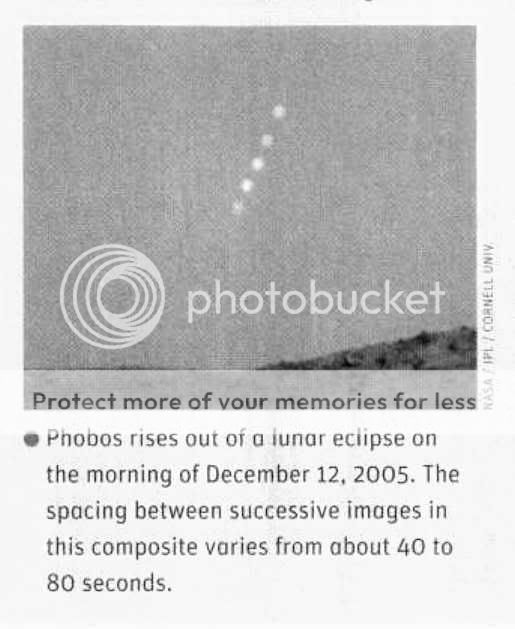3
3488
Guest
<p>I thought that this would be an interesting thread. Eclipse of Phobos by the shadow of Mars as seen by MER A Spirit.</p><p><img src="http://sitelife.space.com/ver1.0/Content/images/store/1/2/719c4980-6661-4715-b2e9-e79dfd3e421c.Medium.jpg" alt="" /></p><p>Andrew Brown.</p> <div class="Discussion_UserSignature"> <p><font color="#000080">"I suddenly noticed an anomaly to the left of Io, just off the rim of that world. It was extremely large with respect to the overall size of Io and crescent shaped. It seemed unbelievable that something that big had not been visible before".</font> <em><strong><font color="#000000">Linda Morabito </font></strong><font color="#800000">on discovering that the Jupiter moon Io was volcanically active. Friday 9th March 1979.</font></em></p><p><font size="1" color="#000080">http://www.launchphotography.com/</font><br /><br /><font size="1" color="#000080">http://anthmartian.googlepages.com/thisislandearth</font></p><p><font size="1" color="#000080">http://web.me.com/meridianijournal</font></p> </div>




